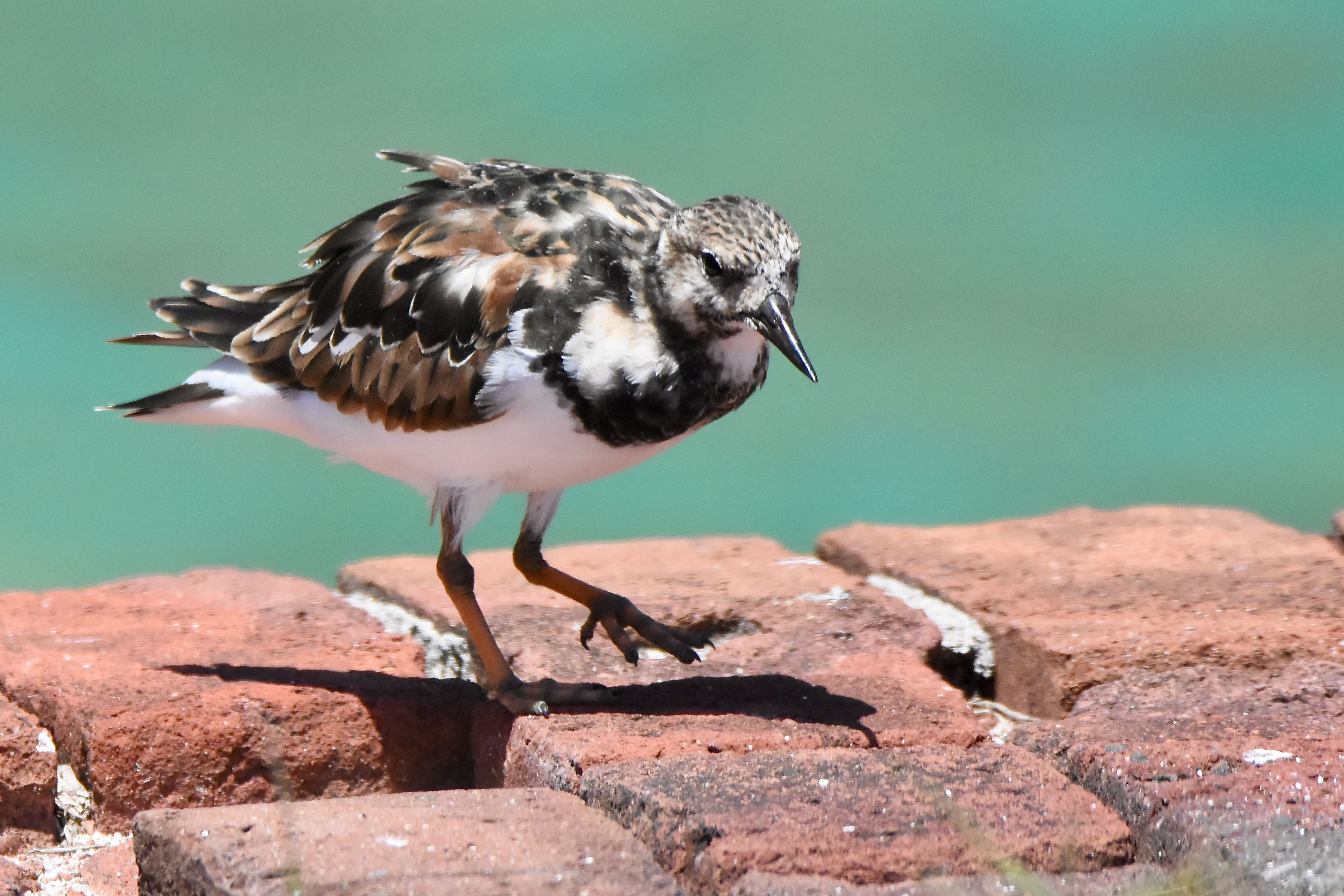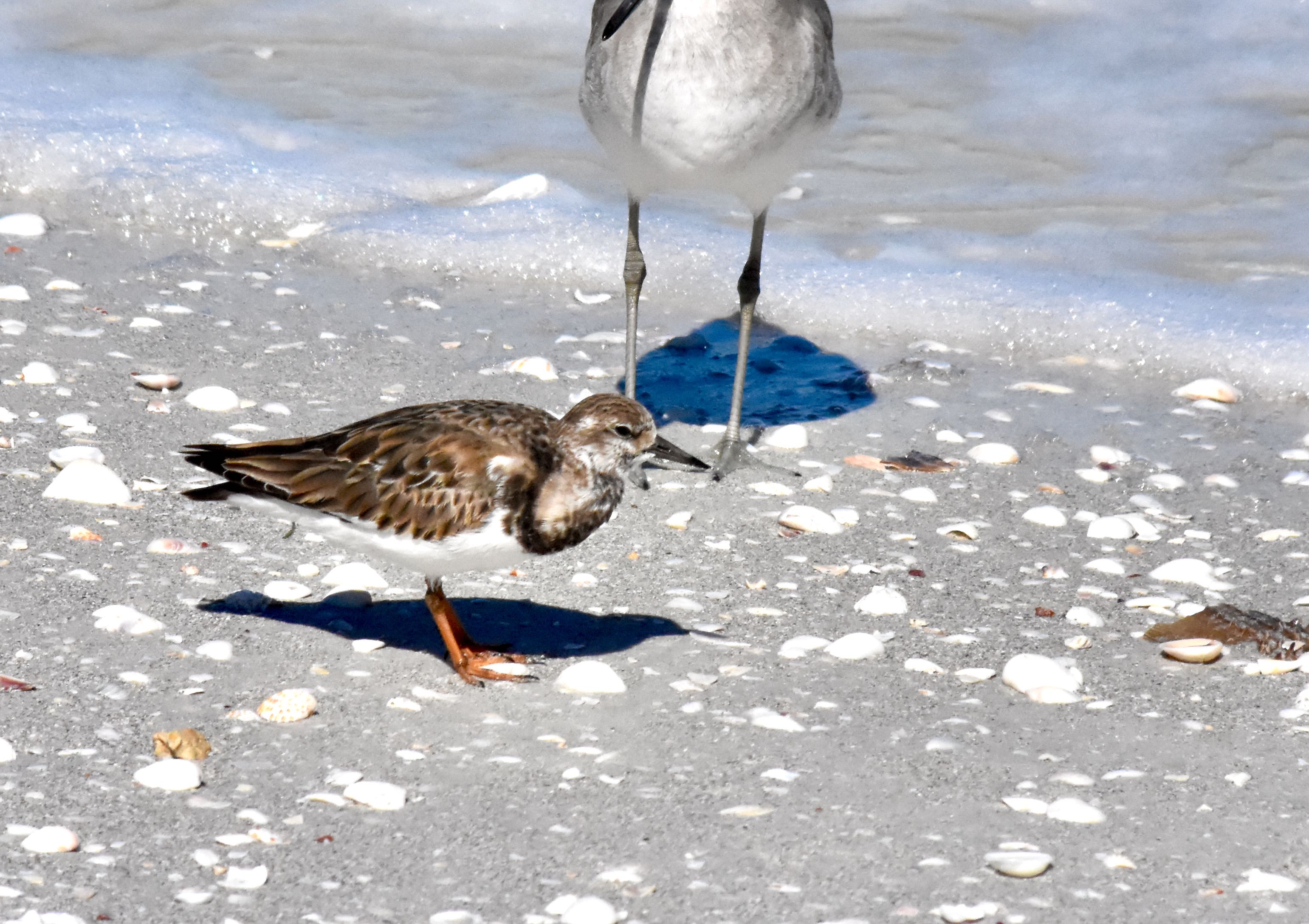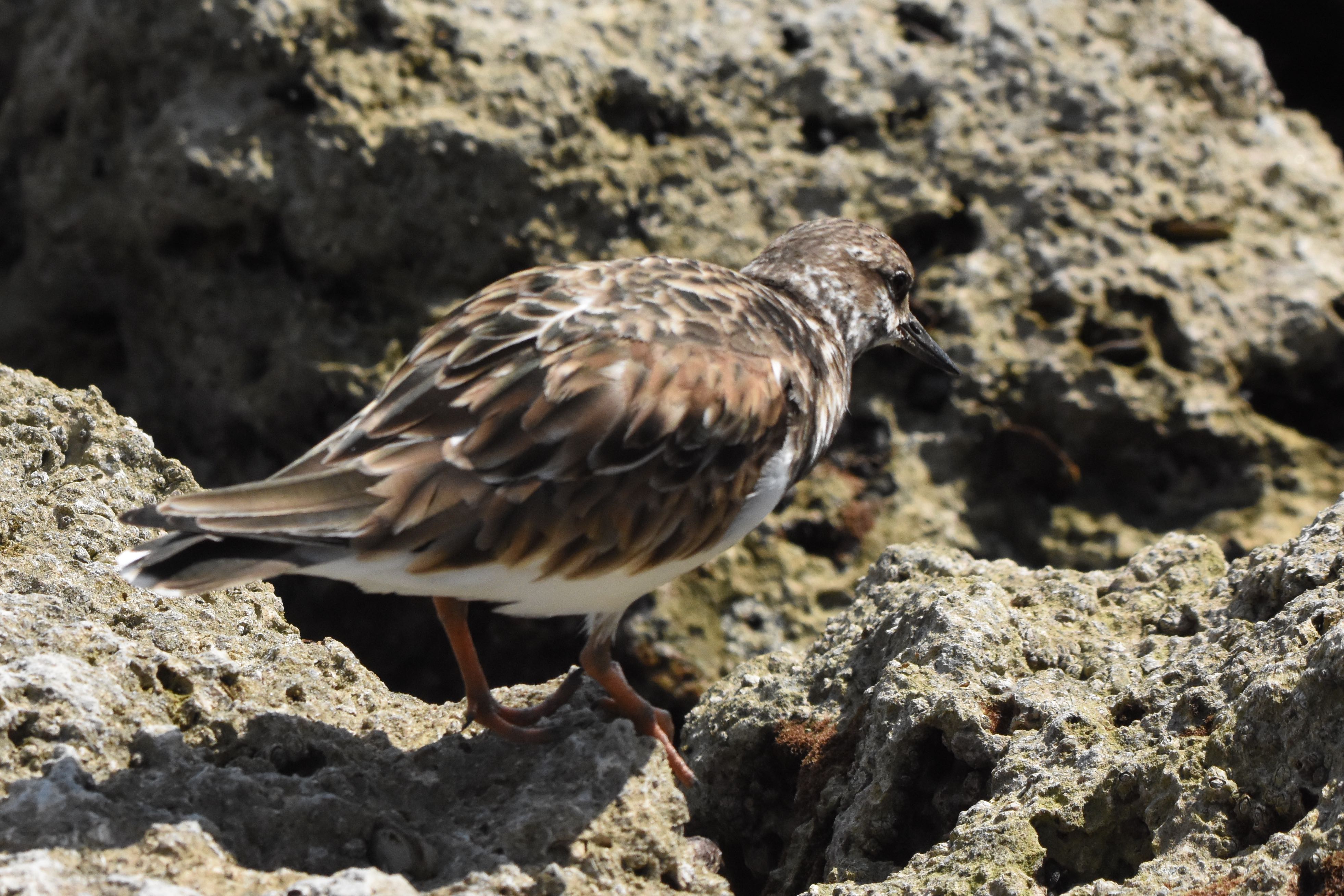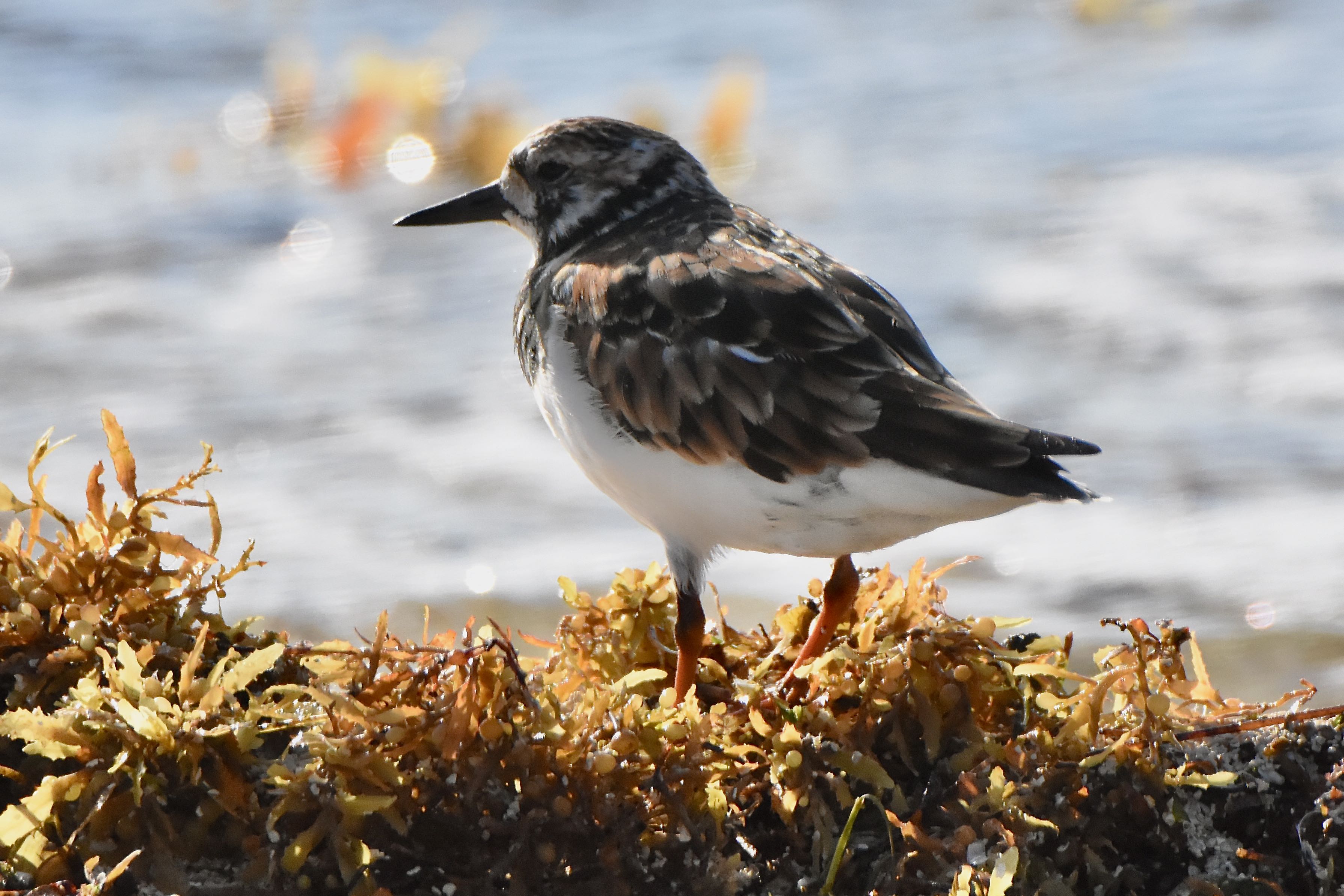
Ruddy turnstone, photographed at Fort Jefferson, Garden Key, Dry Tortugas National Park, Monroe County, in April 2017.
When this sandpiper goes north for the summer, it really goes north. About as far north as you can go and still be on land. We're talking tundra, the extreme reaches of North America, Europe and Asia.
On the other hand, in winter, it can be found just about in any coastal locale on the globe north of Antarctica — North America, South America, Africa, Europe, Asia and even Australia. The ruddy turnstone, Arenaria interpres, is the ultimate snowbird, the ultimate world traveler.
Its looks are as extreme as it migration habits. The summer version of the ruddy turnstone and what we see here in Florida almost look like two different birds. In summer, its face has a sharp black-and-white pattern, the wings are bright red (hence the first part of its name) with some black. Here, it's much duller, more brown, the black-and-white patterns toned down, the red pretty much gone. Some red can be seen in the photo to the left, taken in late October.
One constant: the orange legs and feet (though brighter orange during nesting season). During the summer, ruddy turnstones feed on bugs, berries, seeds and moss. In winter, their tastes turn to seafood, with crustaceans, mollusks and small fish on the menu. They also eat bird's eggs, carion and garbage. Their summer diet is critical; they need to add fat to sustain them during their long migration or risk not making the trip at all.
The second part of their name comes from their habit of turning over rocks, shells and other objects with their bills as they forage for food. So there you have it: a reddish bird that turns over stones. Ruddy turnstone.
It's an average-sized bird, with a wingspan between 1.5 and 2 feet and a body length that can approach nine inches. When they mate, the female will scrape out a small hole or a depression in the ground and line it with vegetation.
According to the Cornell Laboratory of Ornithology, the male will scrape out another hole near the site the female selects, but it's never used.
The mother will lay two to four eggs; once hatched, the young are able to leave the nest and hunt for food on their own. Males, however, will lead them to food and let them know what are good eats for the ruddy turnstone palate. In about three weeks, give or take, they're able to fledge — just before migration time, which they must make without the help of mom and dad, who take off early and leave the kids behind.
They are common birds along South Florida's beaches during the cooler months of the year, usually near the water's edge. Nonbreeding turnstones don't necessarily make the long trek north, so it is possible to see them here even in summer.
Ruddy turnstones are members of Scolopacidae, as are all sandpipers.
Fort Jefferson, Garden Key, Dry Tortugas National Park



